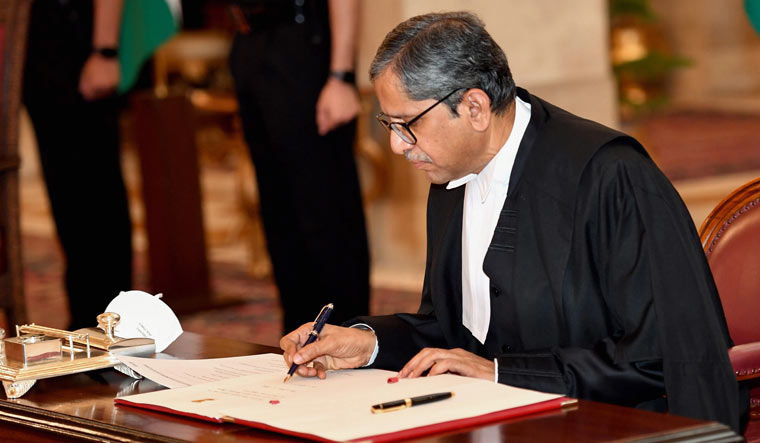Chief Justice of India N.V. Ramana on Saturday called for the country to enter mission mode to popularise mediation as a cheaper and faster dispute resolution mechanism, stressing on the importance of alternate dispute resolution in reducing the pendency of cases in the courts and unclogging the judicial system and suggesting an omnibus law to back it.
“Given the growing scope of mediation, it is time for India to enter mission mode. To popularise mediation as a cheaper and faster dispute resolution mechanism, a movement needs to be launched,” Ramana said, addressing the inaugural India-Singapore Mediation Summit.
He said prescribing mediation as a mandatory first step for resolution of every allowable dispute will go a long way in promoting mediation. “Perhaps, an omnibus law in this regard is needed to fill the vacuum,” he said.
Ramana said considering that a vast majority of litigants in India belong to middle and poorer sections of society, it will help them if mediation gets established as a reliable means of redress. “Needless to state, it will lead to a remarkable reduction in the number of cases reaching the regular courts. Such a scenario will enhance the efficiency of the judicial system,” he said.
The CJI noted that India and other Asian countries have a long and rich tradition of mediation and cited the Mahabharata, saying it provides an example of an early attempt at mediation as a conflict resolution tool, where Lord Krishna attempted to mediate the dispute between the Pandavas and Kauravas.
Alternate dispute redressal mechanisms, particularly mediation and conciliation, can reduce pendency, Ramana said. He said they help save resources and time, and allow litigants a degree of control over the process and outcome of their dispute resolution process. “Designed around a participatory model, mediation and conciliation enable parties to become insiders to a process that traditionally treated them as outsiders,” he said.
also read
- ‘A tight slap to Congress-led opposition’: PM Modi on SC’s EVM, VVPAT verdict
- No going back: SC rejects paper ballot voting, complete verification of EVM-VVPAT slips
- Husband has no control over wife's 'stridhan': Supreme Court
- 'Can't control elections': Supreme Court reserves order in EVM-VVPAT case
The absence of any guidelines or rules for the operation of mediation was being sorely felt and was one of the reasons that mediation was not taken up, Ramana said, adding that the Supreme Court appointed a committee to draft Mediation Rules, which were subsequently approved, and all the High Courts were directed to frame the rules. This, he said, led to the development of Court Annexed Mediation in India.
He pointed out that India has nearly 43,000 mediation centres, and since 2005, nearly 3.22 million cases have been referred and nearly one million cases have been settled by mediation up to March 2021.
Ramana, however, said that despite the encouraging figures, certain barriers persist with respect to the adoption of mediation in India. “Before ensuring the success of mediation in the country, it is necessary to address issues of legitimacy, credibility, and acceptability of mediation,” he said.





